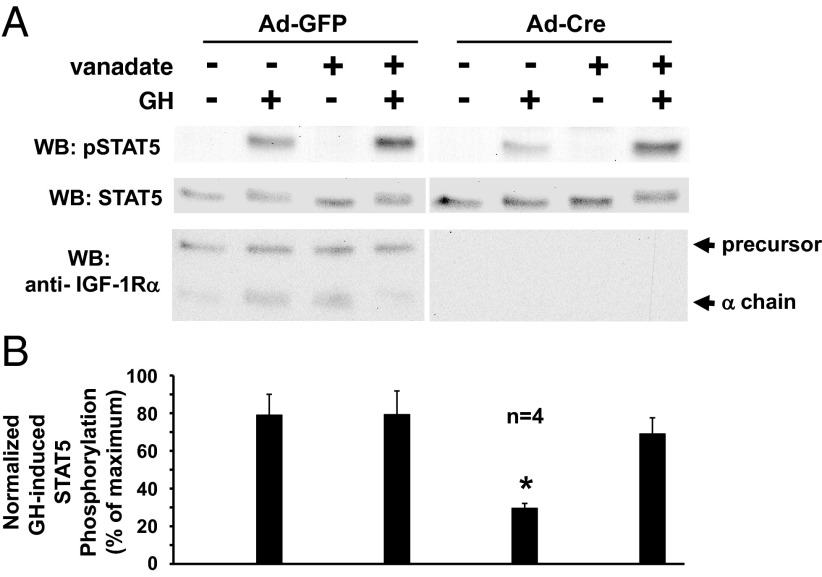Figure 1.
IGF-1R deletion in osteoblasts results in reduced GH-induced STAT5 tyrosine phosphorylation that is reversed by the general tyrosine phosphatase inhibitor, sodium orthovanadate. A and B, Primary osteoblasts were harvested from newborn mice bearing lox-P sites flanking both IGF-1R alleles. Osteoblasts were infected with Ad-Cre vs Ad-GFP, as indicated, as in Materials and Methods. Serum-starved cells were treated with (+) or without (−) sodium orthovanadate (200 μM; 1 hour) and then with GH (+; 250 ng/mL) or vehicle (−) for 10 minutes. Detergent cell extracts were resolved by SDS-PAGE and serially immunoblotted with anti-pSTAT5, anti-STAT5, and anti-IGF-1Rα. A, Representative immunoblots. WB, Western blotting. B, Densitometric quantitation of pSTAT5/STAT5 signals from GH-treated samples from four independent experiments (including that shown in A). In each experiment, the maximum signal was considered 100%. Data are plotted as mean ± SE. *, P < .03 for comparison of Ad-Cre-infected, nonvanadate-treated, GH-treated group to any of the other GH-treated groups. Arrows indicate the positions of the IGF-1R precursor and α-chain.

